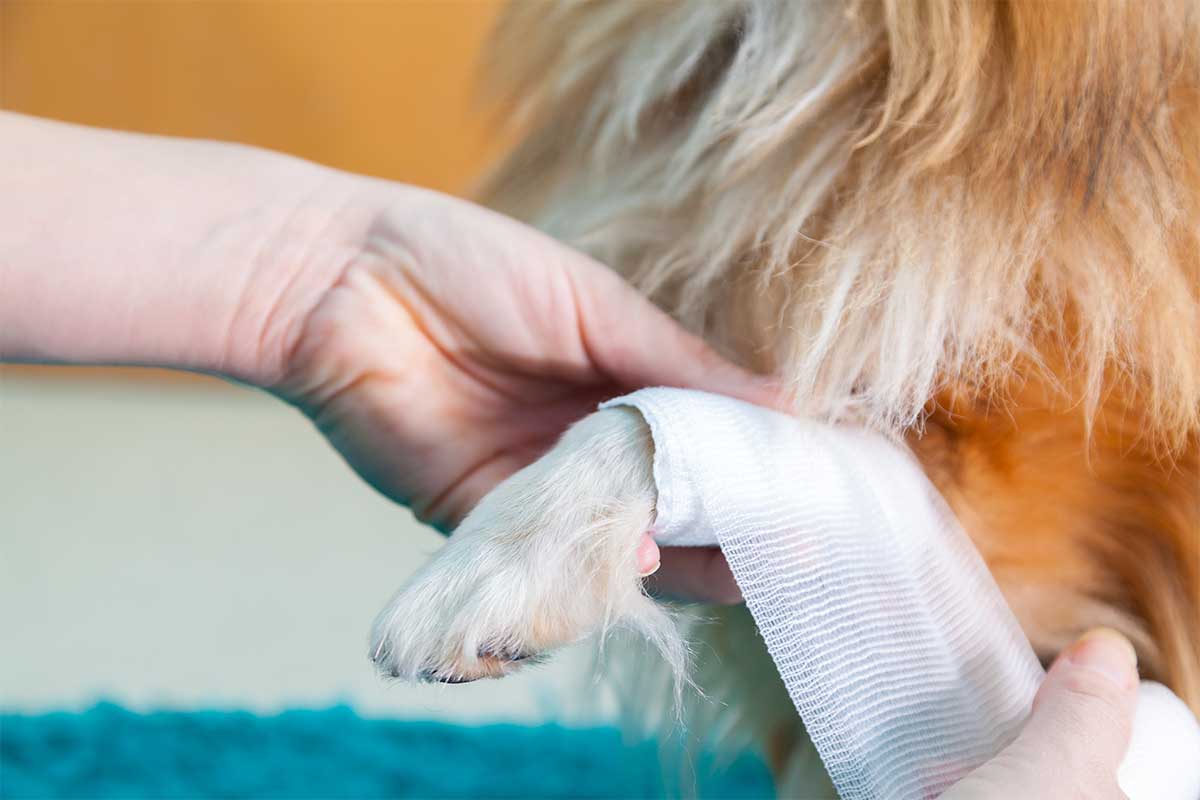Your dog has been injured or you come across a dog who has been hit by a car or sustained some other injury. A dog who is hurt can be fearful. What’s the best way to proceed?
When it comes to handling an injured, fearful dog, take the advice of Leni Kaplan, DVM: less is more effective – and safer.
“I’m a strong advocate of low-stress handling techniques,” says Dr. Kaplan, a veterinarian at Cornell University College of Veterinary Medicine in Ithaca, N.Y. “Employ calmness, patience, and approach slowly.”
To keep yourself safe, recognize the warning signs that a scared dog in pain is about to lunge or bite you.
“A fearful dog tends to flatten his ears, pant strongly, yawn and lick his lips as you approach,” says Dr. Kaplan. “He is apt to pace and do his best to dodge being petted or handled. The closer you get, he is likely to crouch, growl and even attack you.”
Any dog, including injured ones, can tune into our emotional state and accurately read if we are feeling scared or even impatient. Here’s what to do before approaching an injured dog:
- Take a deep breath in and exhale. This helps you get into the moment and become focused.
- Carefully survey your surroundings to ensure you are not putting yourself into harm’s way. Look around to make sure there are no aggressive dogs approaching, traffic, or hazards such as downed power lines between you and the injured dog.
- Do not rush up to the dog. Instead, first try tossing treats away from you to entice him to come closer to the food and then to you.
- Approach the dog at an angle with your body to the side without making direct eye contact. This is less threatening than facing a dog with your shoulders square toward his.
- Speak in a calm, confident tone. Do not yell or shout as that will escalate his level of panic and the feeling that he needs to protect himself. Say the dog’s name if you know it. Wait for his growling or barking to lessen in volume before approaching.
- Avoid direct eye contact – an action considered threatening or challenging to dogs. Never bend down and come face-to-face with a fearful dog.
- Offer bite-size treats as a way to change his mood from fearful to food-motivated.
- Use a portable but sturdy physical barrier such as a baby gate or sofa cushion as you approach the dog to protect yourself.
- To safely restrain an injured dog so you can transport him to the nearest veterinary clinic for treatment, slide a slip lead over his head. If you don’t have one, you can make a loop with a standard 6-foot nylon leash to accomplish the same purpose.
- For a small dog, use a thick bath towel to wrap him like a burrito to control his head movement and prevent escape. You can also roll the towel and wrap it under the dog’s lower jaw and hold on to the towel at the back of the dog’s neck to prevent his movement and keep his lower jaw from opening to attempt to bite you.
Using these techniques will help to reduce the fear and pain caused by his injury and help keep both you and the dog safe from further injury.
This article was reviewed/edited by board-certified veterinary behaviorist Dr. Kenneth Martin and/or veterinary technician specialist in behavior Debbie Martin, LVT








